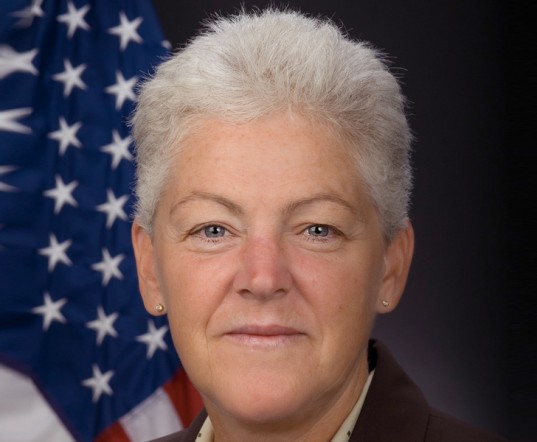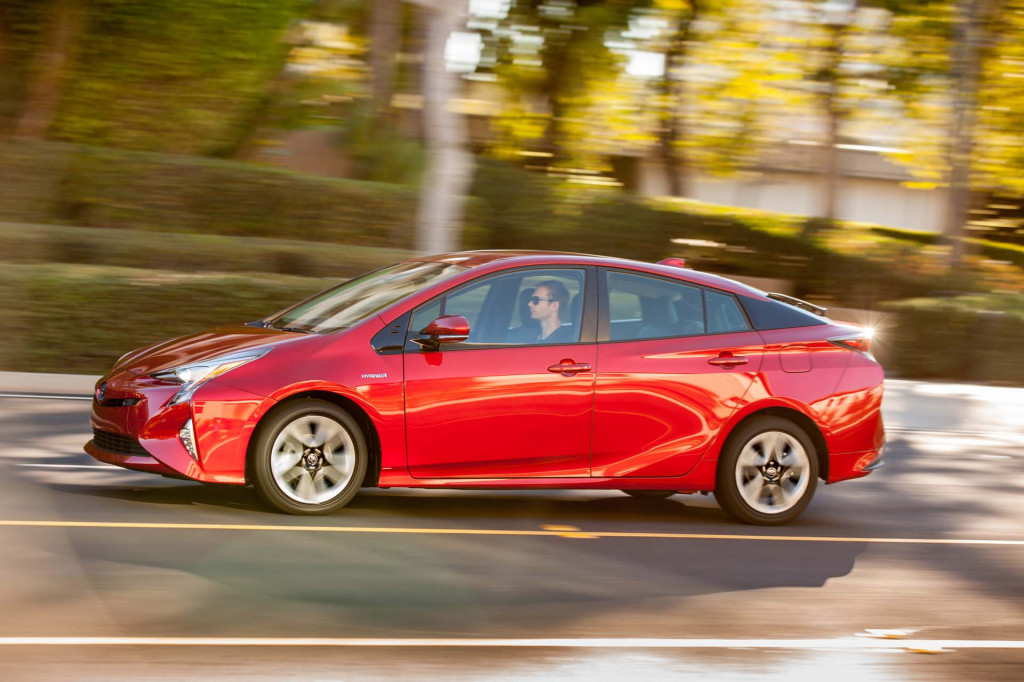While the name of EPA administrator Scott Pruitt is often preceded by "embattled" these days, his agency is now on record as rejecting its own recommendation of just 16 months ago.
It concluded in July 2016 that the auto industry had handily met lower carbon-emission limits from 2012 through 2017—at lower cost and with more conventional technologies, requiring less costly electrification, than anticipated when the rules were drafted in 2010.
Those conclusions were issued in July 2016 in the form of a 1,217-page Draft Technical Assessment Report.
DON'T MISS: 8 things you should know about EPA plan to let cars emit more
Following a public comment period, then-EPA administrator Gina McCarthy accepted the conclusions of that technical assessment and finalized the proposed standards for vehicles in the 2022 through 2025 model years without changes.
The inauguration of Donald Trump as president four days later indicated that a change in direction was coming, and now it has arrived.

Gina McCarthy, nominee for Environmental Protection Agency administrator
But Pruitt's end-of-March decision to embark on a process to change direction is the first of what will be many steps before rules limiting vehicular emissions of the climate-change gas carbon dioxide can actually be altered.
The history of the Midterm Evaluation of the agency's Greenhouse Gas Emissions is laid out on the EPA website, including a link to the Technical Assessment Report.
It includes McCarthy's decision to "maintain the current GHG emissions standards for model year (MY) 2022-2025 vehicles."
"Her final determination," the site notes, "found that automakers are well positioned to meet the standards at lower costs than previously estimated."
The new administration intends to change all that.
A new section, higher up, notes that on March 15 of this year, "EPA Administrator Scott Pruitt and Department of Transportation Secretary Elaine Chao announced that EPA intended to reconsider the final determination ... that recommended no change to the greenhouse gas standards."
On Monday, Pruitt signed a finding that "the model year 2022-2025 greenhouse gas standards are not appropriate in light of the record before EPA and, therefore, should be revised."
![EPA administrator Scott Pruitt [photo from 2014] EPA administrator Scott Pruitt [photo from 2014]](https://images.hgmsites.net/lrg/oklahoma-attorney-general-scott-pruitt-2014_100584650_l.jpg)
EPA administrator Scott Pruitt [photo from 2014]
The supporting document is a 38-page notice published in the Federal Register, "Mid-term Evaluation of Greenhouse Gas Emissions Standards for Model Year 2022-2025 Light-duty Vehicles (PDF)."
That is just an opening salvo, of course. Now a rulemaking process must commence.
Compliance reports
One document likely to receive great attention are the Manufacturer Performance Reports that cover automakers' compliance with the greenhouse-gas emission limits for each model year.
For 2016, as that page notes, for the first time, the model mix sold by eight of 13 major manufacturers emitted more greenhouse gases (9 g/mi) than permitted.
Of the five makers that complied, Honda generated the most excess credits (at 16 g/mi). Of the eight that didn't, Fiat Chrysler had the highest deficit (28 g/mi), but even Toyota—known for its Prius hybrids—had a 10 g/mi deficit.

2018 Toyota Prius
However, all makers were able to offset those deficits using credits accumulated in model years 2012 through 2015, which can be used as offsets for up to three years after they are generated.
"All large manufacturers concluded Phase 1 of EPA’s GHG standards meeting the standards and with substantial credits available to use through 2021," the report concludes.
And that's what has led the industry and Pruitt to focus on the standards for 2022 through 2025. Now the battle of facts, models, projections, and technology advances will begin in earnest.
"Contentious"
"This round of rulemaking is sure to be contentious," noted the Center for Automotive Research wryly. "There may well be many legal battles before the outcome of MY 2022-2025 fuel economy and emissions standards are determined."
CAR is a Michigan-based industry study group, partly funded by automakers, that made dire predictions about the effects of the Obama Administration's 2018-2025 CAFE standards.
CAR predicted those rules would cause U.S. auto sales (now 17.5 million vehicles annually) to fall by 5.5 million vehicles, and destroy more than a quarter-million jobs.
For the record, that has not happened.













